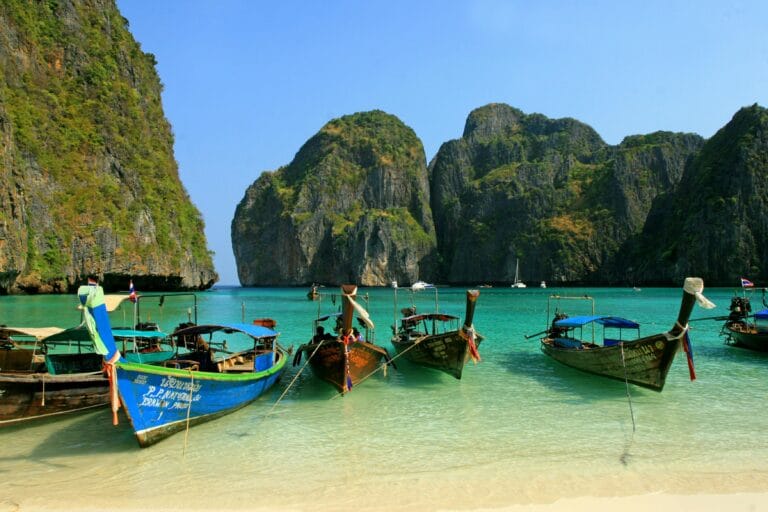Krabi Boat Tours: Island Hopping & Stunning Beaches.
The history of Krabi boat tours is deeply intertwined with the region’s geography and the traditional livelihoods of its inhabitants. For centuries, local fishermen navigated the Andaman Sea in longtail boats, relying on these vessels for their sustenance. As tourism began to develop in Krabi, these traditional boats became a means for visitors to explore the stunning coastline and nearby islands. Early tours were simple affairs, often conducted by local fishermen supplementing their income. Over time, as Krabi’s popularity grew, boat tours became more organized, with established routes to iconic destinations like the Phi Phi Islands and the Four Islands. The evolution saw the introduction of speedboats, offering faster travel times and access to more remote locations. This transition also brought about increased focus on safety and environmental awareness. Today, Krabi boat tours offer a blend of cultural immersion and natural exploration, allowing visitors to experience the beauty of the Andaman Sea while respecting the region’s heritage. The tours have become a vital part of the local economy, providing employment and showcasing Krabi’s unique charm to a global audience.
Historical Significance.
The Krabi boat tour is not just a scenic excursion—it carries historical and cultural significance rooted in the region’s past. Here’s a look at its historical importance:
1. Ancient Maritime Trade Routes
Krabi has long been an important coastal hub, dating back thousands of years. The Andaman Sea was a key part of the ancient maritime trade route that connected India, China, and the Middle East. Traders, merchants, and explorers used these waters to exchange goods, cultures, and traditions. The islands and limestone karsts that boat tours now visit were once stopover points for seafarers.
2. Prehistoric Settlements & Cave Art
Many boat tours in Krabi take visitors to Tham Phi Hua To Cave and Viking Cave (Phi Phi Islands), where prehistoric cave paintings have been discovered. These paintings, believed to be over 3,000 years old, depict marine life and human figures, providing evidence of ancient human settlements.
3. Chao Ley (Sea Gypsy) Heritage
The Urak Lawoi, or Chao Ley (Sea Gypsies), have lived in Krabi and nearby islands for centuries. They are expert seafarers who relied on traditional wooden long-tail boats for fishing and transport. Today, their boat-building techniques are still used, and many Krabi boat tours operate using these long-tail boats, preserving their heritage.
4. Pirate Legends
Krabi’s coastlines and hidden coves were once notorious hideouts for pirates. In the 18th and 19th centuries, pirates from Malaysia and beyond used these waters for ambushes and smuggling operations. Some tours take visitors to caves where pirates allegedly stored their loot.
5. World War II Impact
During World War II, Krabi and the Andaman Sea saw activity related to the Japanese occupation of Thailand. Some caves and islands were used as hideouts by resistance groups and smugglers.
6. Rise of Tourism & Conservation
In the late 20th century, Krabi transformed into a global tourist destination. The boat tours helped boost the local economy, but they also led to conservation efforts to protect the fragile marine ecosystems of Phi Phi Islands, Railay Beach, and Ao Nang.







